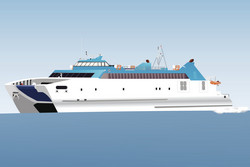Designing greener ships
Europe has set short-term emissions targets for many sectors, including shipping, and longer-term targets will be even more ambitious. The ability to simulate vessels' energy consumption during the design phase will help make such goals a reality. The EU-funded JOULES(opens in new window) (Joint operation for ultra low emission shipping) project aims to provide such capacity. The goal is to reduce carbon dioxide and all other emissions of European-built ships. Given the complex contextual situation of each ship, achieving the objective will require comparison of candidate technologies. The 41-member consortium will develop the predictive tools established by a previous EU project (BESST), enabling such comparison across ships' entire life cycles. The most promising technologies will be consolidated into four demonstration cases. First-year work began with identifying the modelling requirements. The step yielded two different approaches and an input-output simulation matrix. Using the matrix, researchers subsequently modelled simulation components. The step allowed identification of optimum levels of design complexity and reflection of crucial component interdependencies. The team established a dedicated quality assurance process for simulation models. Additionally, researchers identified 8 different validation experiments to be conducted during the second period, and detailed design parameters for 11 application cases for future designs. The phase also yielded a matrix of ship technology concepts, for use in simulation, and selection criteria for future demonstrators. An interdisciplinary working group defined a methodology for screening life-cycle assessment. Such developments allow calculation of energy demand and global warming potential over a ship's entire life cycle. Researchers also produced first versions of the expected design and simulation tools. Results to date allow modelling of candidate shipping technologies in terms of energy consumption and pollutant emissions. Hence, optimal designs will be produced, reducing emissions and moving the industry towards sustainability.







